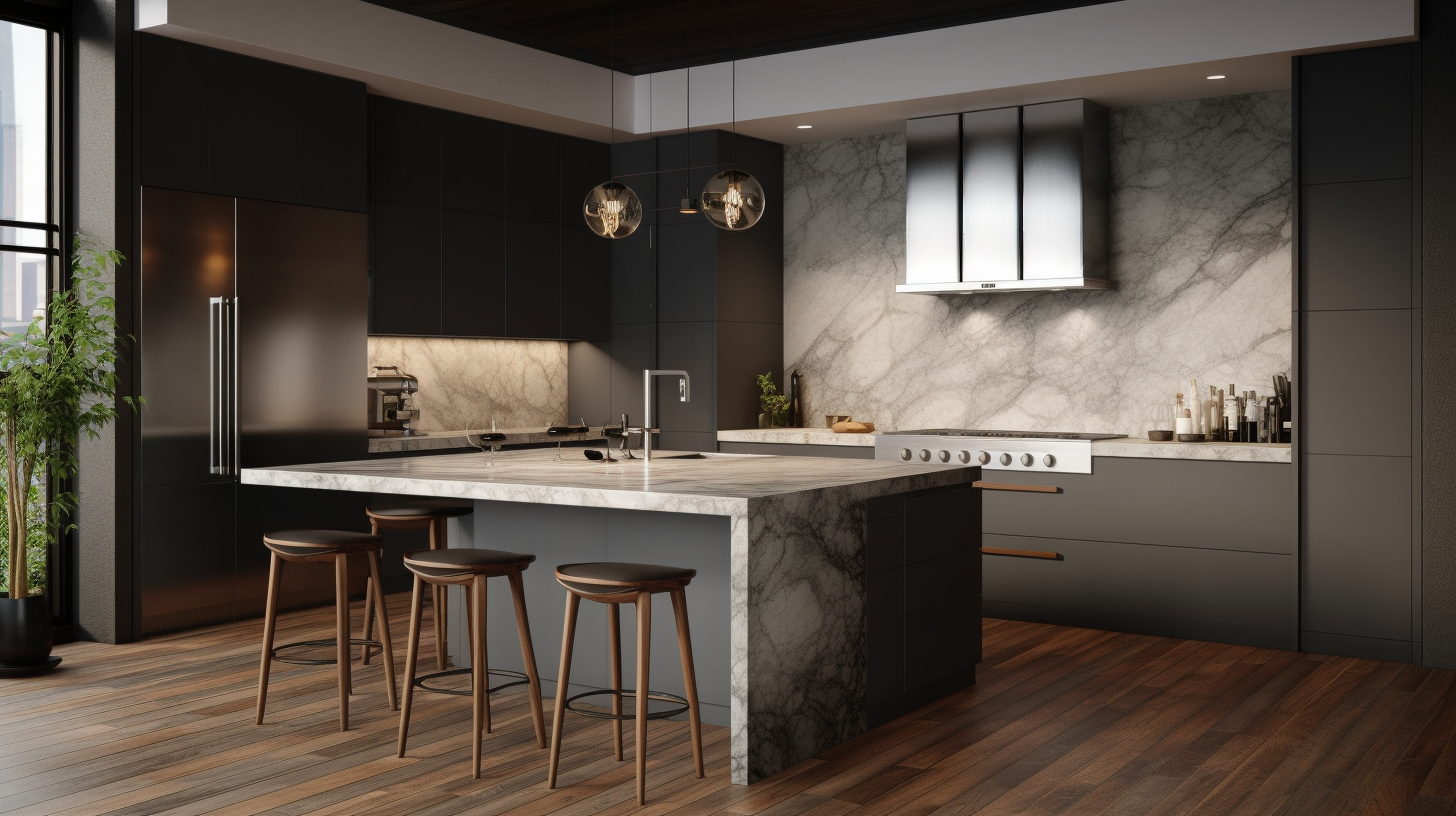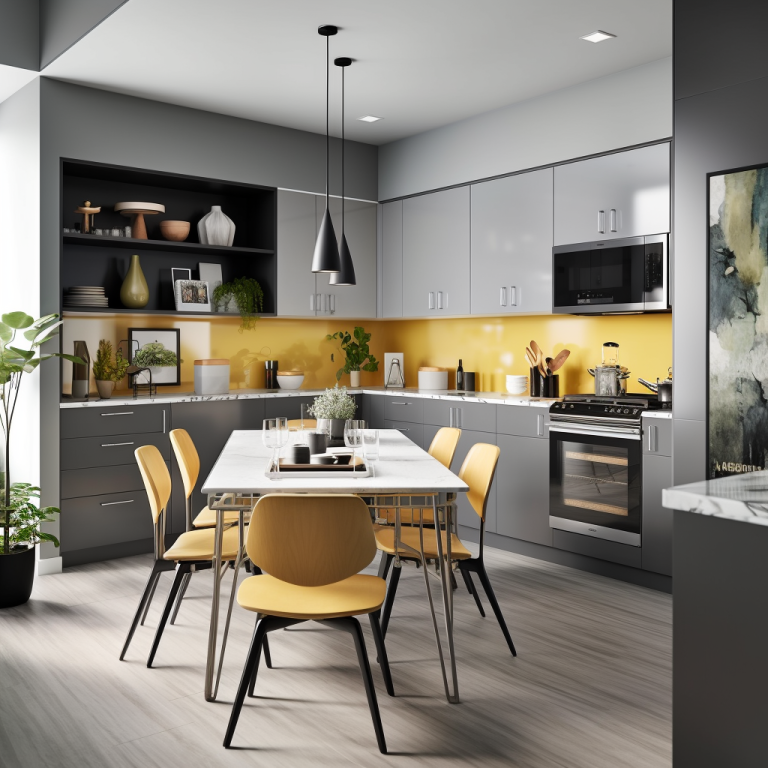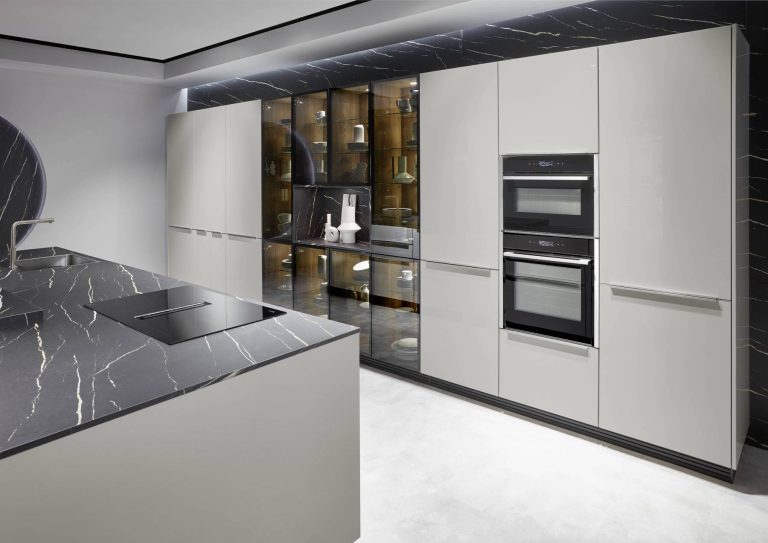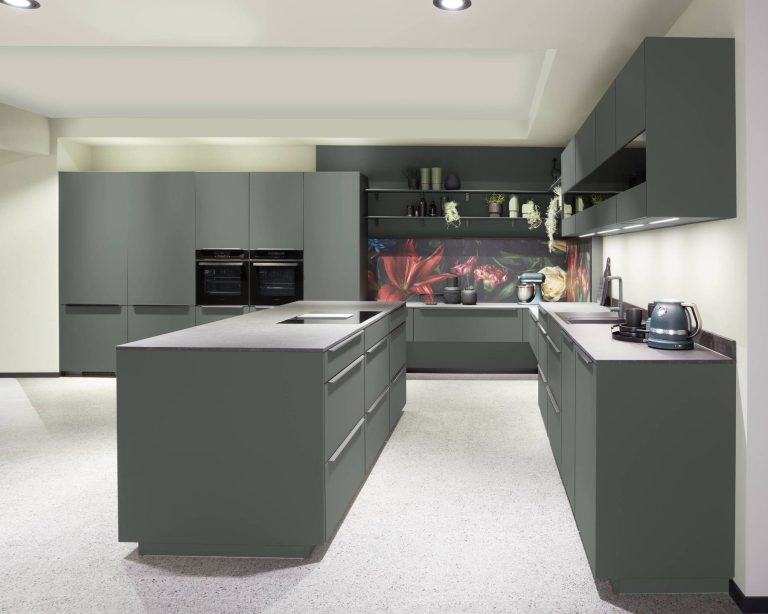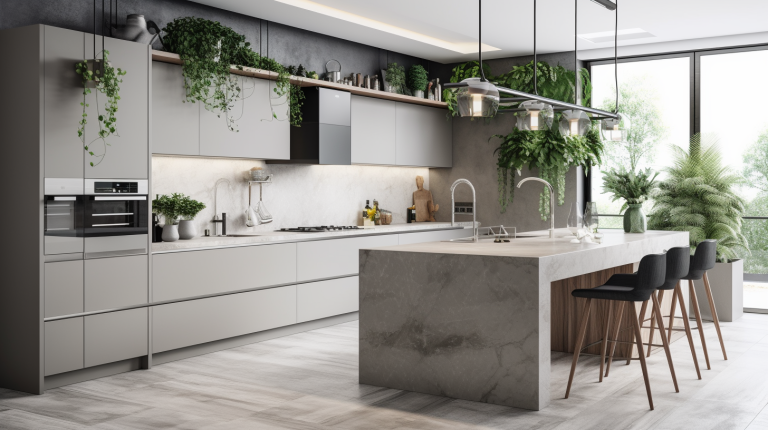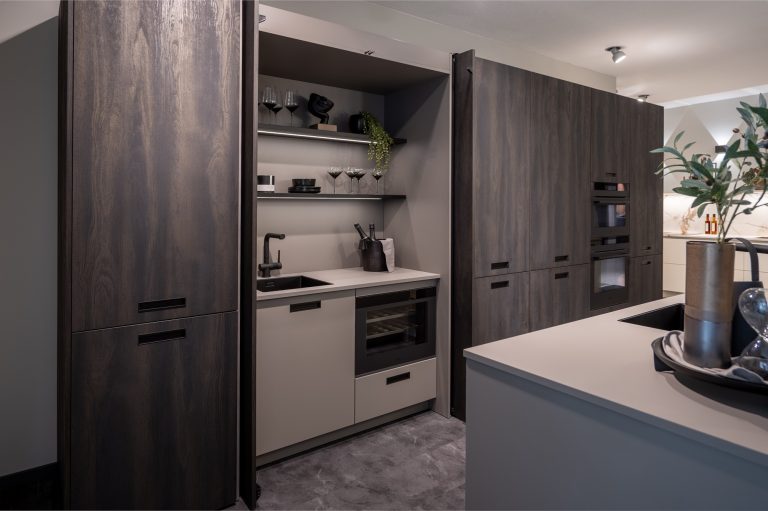Grey Kitchen Designs
Grey kitchen designs have emerged as a popular choice for both contemporary and classic interiors, providing a versatile and sophisticated canvas for various styles and preferences. As a neutral shade, it offers a balanced and calming atmosphere while allowing for a wide range of complementary colours and textures to be incorporated.
This article delves into the various aspects of designing a grey kitchen, including selecting the appropriate shade of grey, combining different textures, choosing the ideal cabinets and countertops, and incorporating eye-catching accents and accessories to create a functional yet aesthetically pleasing space.
The process of designing a grey kitchen entails careful consideration of various design elements to ensure that the final outcome is both visually appealing and practical. A well-executed grey kitchen design can result in a timeless and elegant space that is both functional and inviting.
The following sections will provide valuable insights and guidance on how to achieve the perfect balance between aesthetics and functionality in a grey kitchen design while taking into account individual tastes and preferences.
Choosing the Right Shade of Grey for your design

Selecting the appropriate hue for your culinary space is crucial in achieving a harmonious and aesthetically pleasing environment. Grey, a versatile and timeless colour, offers a wide range of shades and undertones that can transform a kitchen into a sophisticated and inviting space.
The key to choosing the right shade of grey lies in understanding its various undertones and how they interact with the lighting, fixtures, and other design elements of the kitchen. Furthermore, it is important to consider the size and layout of the space, as certain shades of grey can create an illusion of spaciousness or cosiness depending on their depth and saturation.
To select the perfect shade of grey for your kitchen, it is essential to first analyse the undertones present in the color. Greys can have cool, warm, or neutral undertones, each offering a unique ambiance to the space. Cool undertones, such as blue or green, can create a serene and calming atmosphere, while warm undertones, such as beige or yellow, can evoke a sense of warmth and comfort. Neutral undertones, on the other hand, act as a blank canvas that allows for more versatility in incorporating other colours and design elements.
Additionally, it is crucial to consider the natural and artificial lighting in the space, as it can significantly impact the appearance of the chosen grey shade. For instance, a north-facing kitchen may benefit from a warmer shade of grey to counterbalance the cool natural light, while a south-facing kitchen may require a cooler shade to achieve a balanced and visually appealing design.
Mixing and Matching Textures In Your Grey Kitchen Design
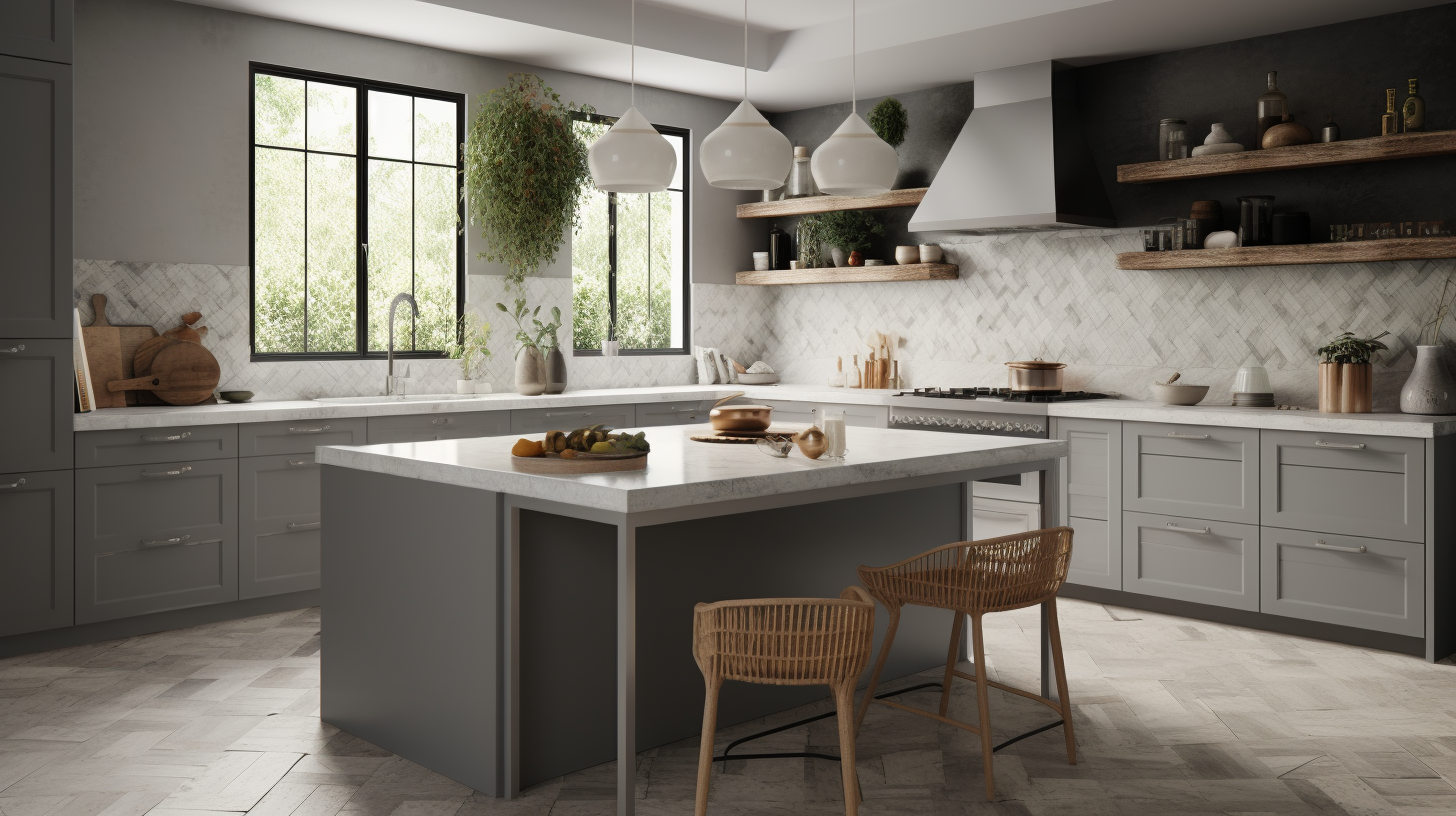
Incorporating a variety of textures in the culinary space can enhance the visual appeal and create a dynamic, inviting ambience. When designing a grey kitchen, this aspect becomes particularly important as the monochromatic colour scheme can sometimes appear dull and lifeless. Mixing and matching different textures can bring depth, warmth, and visual interest to the kitchen.
A wide range of materials can be used to achieve this effect, including natural stone, wood, glass, metal, and various types of fabrics. For instance, a smooth grey countertop can be complemented by a textured backsplash made of natural stone or mosaic tiles, whilst wooden cabinets with a matte finish can be paired with glossy grey appliances or metallic accents.
When selecting the appropriate textures to incorporate into a grey kitchen design, it is essential to consider the overall style and theme of the space. For example, in a contemporary kitchen, sleek surfaces and minimalistic details are more appropriate, while a traditional or rustic kitchen may call for rougher textures and ornate patterns. Additionally, it is crucial to strike a balance between the various textures to avoid overwhelming the design or creating visual chaos.
The key is to layer and harmonise the different elements in a way that adds depth and complexity without compromising the overall aesthetic. By thoughtfully combining a range of textures, a grey kitchen can transform into a sophisticated and visually engaging space that is both functional and stylish.
Selecting the Ideal Cabinets and Countertops For Your Grey Kitchen Design
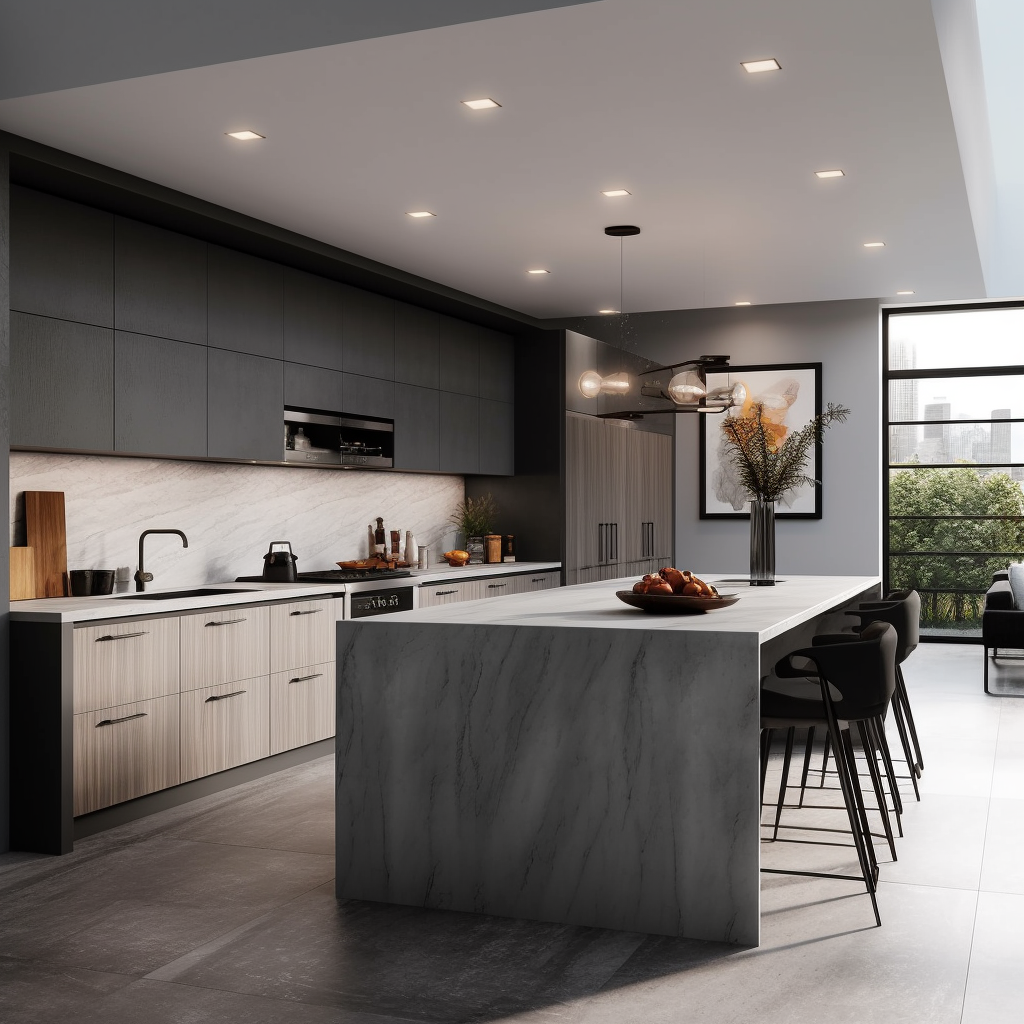
Optimal cabinetry and countertop choices play a vital role in establishing the perfect balance between form and function, elevating the aesthetics and practicality of the culinary space. When selecting cabinets and countertops for a grey kitchen design, it is essential to consider the durability, maintenance requirements, and visual appeal of the materials.
High-quality options such as solid wood or plywood cabinets paired with quartz or granite countertops not only offer longevity but also contribute to the overall sophistication of the design. Additionally, the incorporation of various finishes, textures, and hardware choices allows for customization, ensuring that the kitchen space reflects the homeowner’s personal taste and preferences.
In grey kitchen designs, the use of contrasting hues and materials can create a visually captivating environment. For instance, pairing dark grey cabinets with light grey countertops or vice versa can add depth and dimension to the space, while the incorporation of metallic accents in hardware or fixtures can introduce a touch of modern elegance.
Moreover, the strategic placement of open shelving or glass-front cabinets can enhance the kitchen’s functionality and provide opportunities for displaying decorative items or cookware, further personalising the space. Ultimately, the selection of the ideal cabinets and countertops in a grey kitchen design requires careful consideration of various factors, including the homeowner’s aesthetic preferences, budget constraints, and the desired level of functionality.
Incorporating Eye-Catching Accents and Accessories
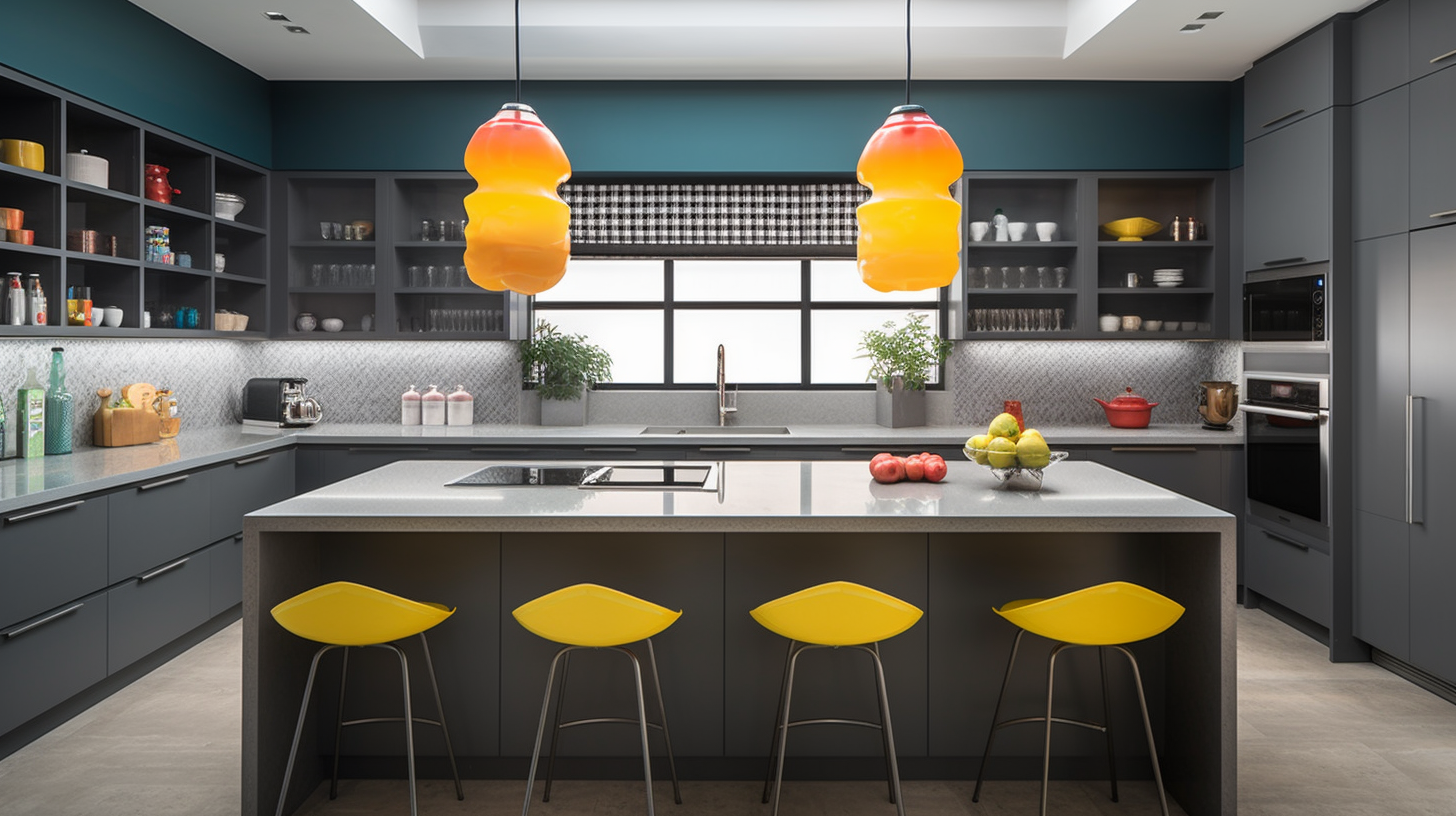
To further enhance the visual appeal and functionality of a well-designed culinary space, incorporating striking accents and accessories is crucial in creating a cohesive and captivating atmosphere. Thoughtfully chosen details can seamlessly blend with the grey kitchen design while infusing the room with a touch of character and personal style. These accents and accessories may serve a practical purpose or merely add visual interest to the space, but they all contribute to the overall aesthetic and functionality of the kitchen.
– **Lighting**: Properly selected lighting fixtures can serve as a statement piece in a grey kitchen. Consider pendant lights above the island or dining area, under-cabinet lighting to illuminate workspaces, and recessed lighting for a clean and modern look. Opt for metallic finishes or subtle pops of colour to create a visually stimulating contrast with the grey colour palette.
– **Hardware**: The hardware on cabinets and drawers is the jewellery of the kitchen. Selecting pieces that complement the grey theme while adding a unique twist can elevate the overall design. Consider brushed nickel, stainless steel, or even matte black finishes for a contemporary feel, or opt for brass or gold-tone hardware for a touch of elegance.
– **Backsplash**: A backsplash serves as both a practical and aesthetic element in a kitchen. Choose a material and pattern that complements the grey cabinetry and countertops while adding visual interest to the space. Popular options include subway tiles, mosaic patterns, or even an unexpected touch of colour to break up the monochromatic theme.
Incorporating these eye-catching accents and accessories within a grey kitchen design can help create a space that is both visually stunning and highly functional, reflecting the homeowner’s personal taste and style.
Balancing Functionality and Aesthetics in Your Space
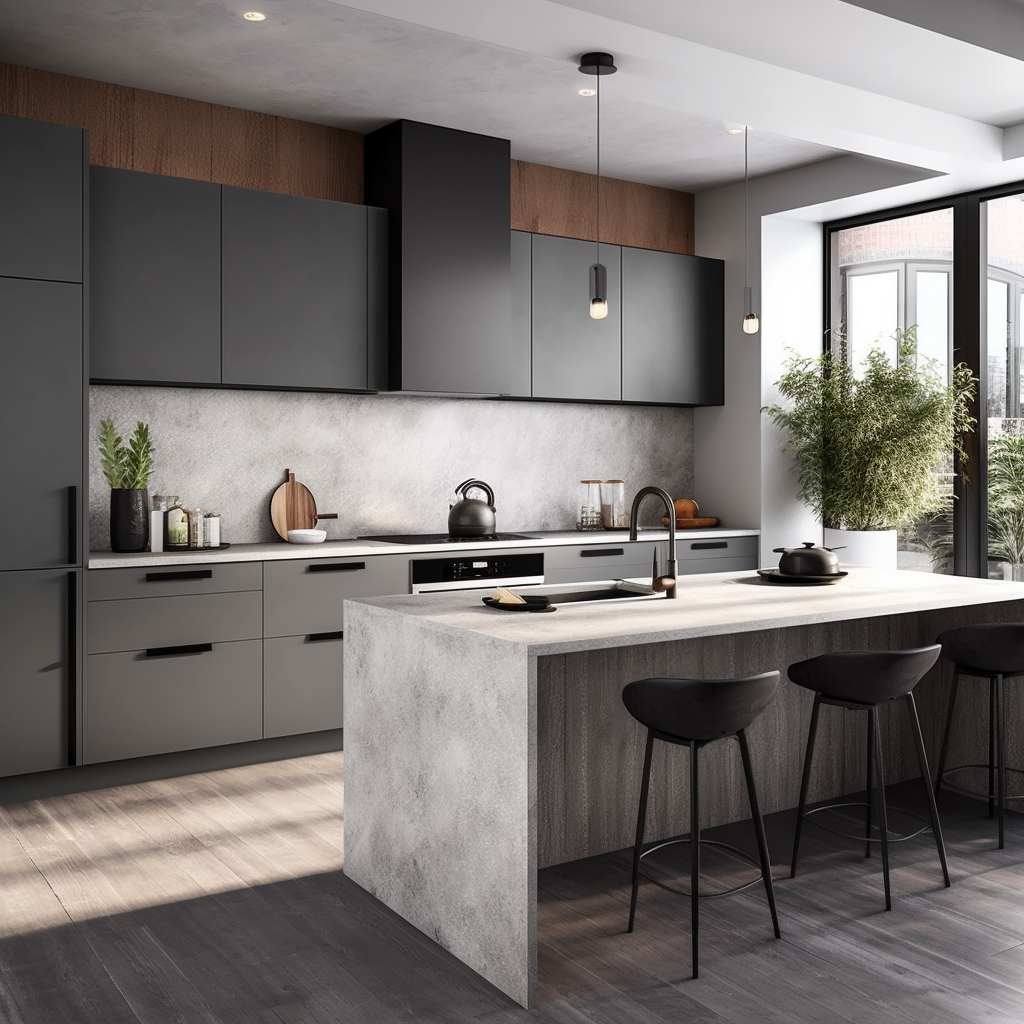
Striking the perfect balance between functionality and aesthetics in a culinary space is essential for creating an environment that is both practical and visually appealing. To achieve this equilibrium in a grey kitchen design, it is crucial to consider the layout, storage solutions, and choice of materials.
A well-organised layout ensures that all essential elements, such as appliances, countertops, and cabinets, are easily accessible and have a designated place. Furthermore, selecting durable and easy-to-maintain materials, such as stainless steel or quartz countertops, contributes to the practicality of the space while enhancing its visual appeal.
In addition to the functional aspects, incorporating aesthetically pleasing elements into a grey kitchen design is crucial for creating a cohesive and inviting environment. By utilising various shades of grey, contrasting textures, and pops of colour, one can achieve a sophisticated and modern look that suits the homeowner’s personal style.
For instance, grey cabinetry can be paired with a lighter grey subway tile backsplash, while a bold accent colour, such as a vibrant red, can be introduced through accessories or small appliances. Ultimately, the harmonious blend of functionality and aesthetics in a grey kitchen design not only enhances the overall appearance of the space but also promotes a seamless and enjoyable cooking experience.
Conclusion
In conclusion, the implementation of grey kitchen designs requires careful consideration of various elements to create a harmonious and functional space.
It is essential to select the appropriate shade of grey, combine diverse textures, and choose suitable cabinets and countertops to ensure a cohesive and appealing design.
Furthermore, incorporating eye-catching accents and accessories can enhance the visual appeal of the kitchen, while maintaining a balance between functionality and aesthetics.
This approach ensures a stylish and practical kitchen that meets the needs and preferences of its users.
